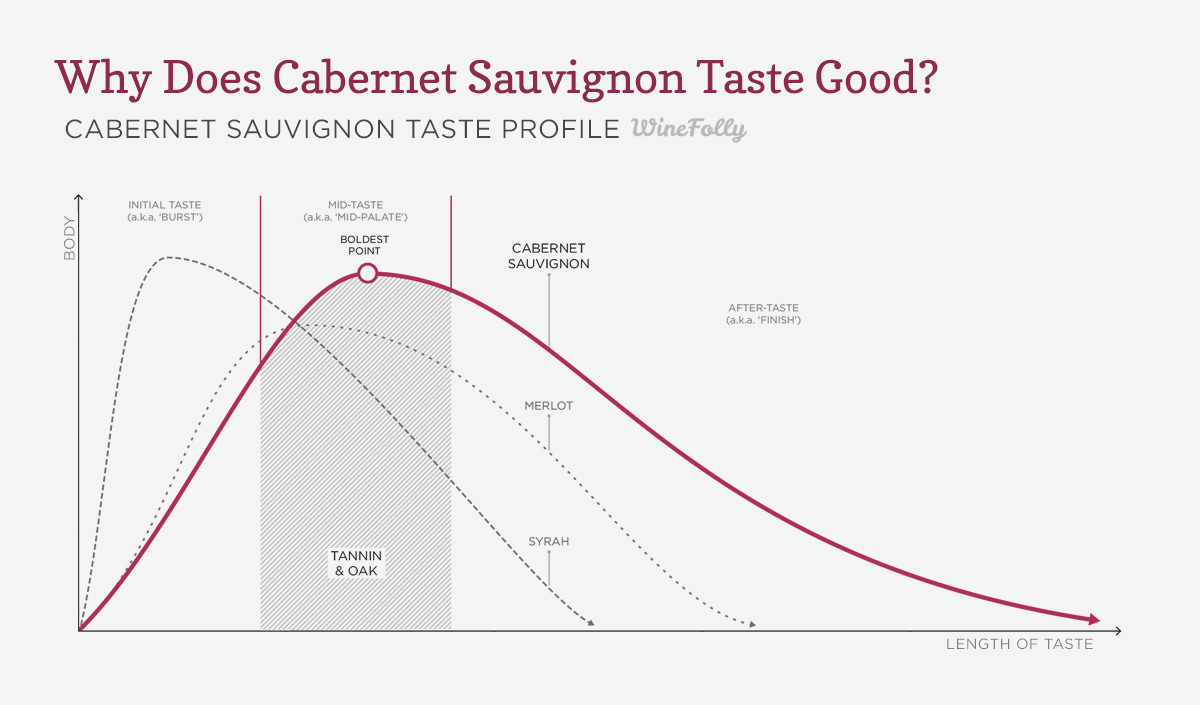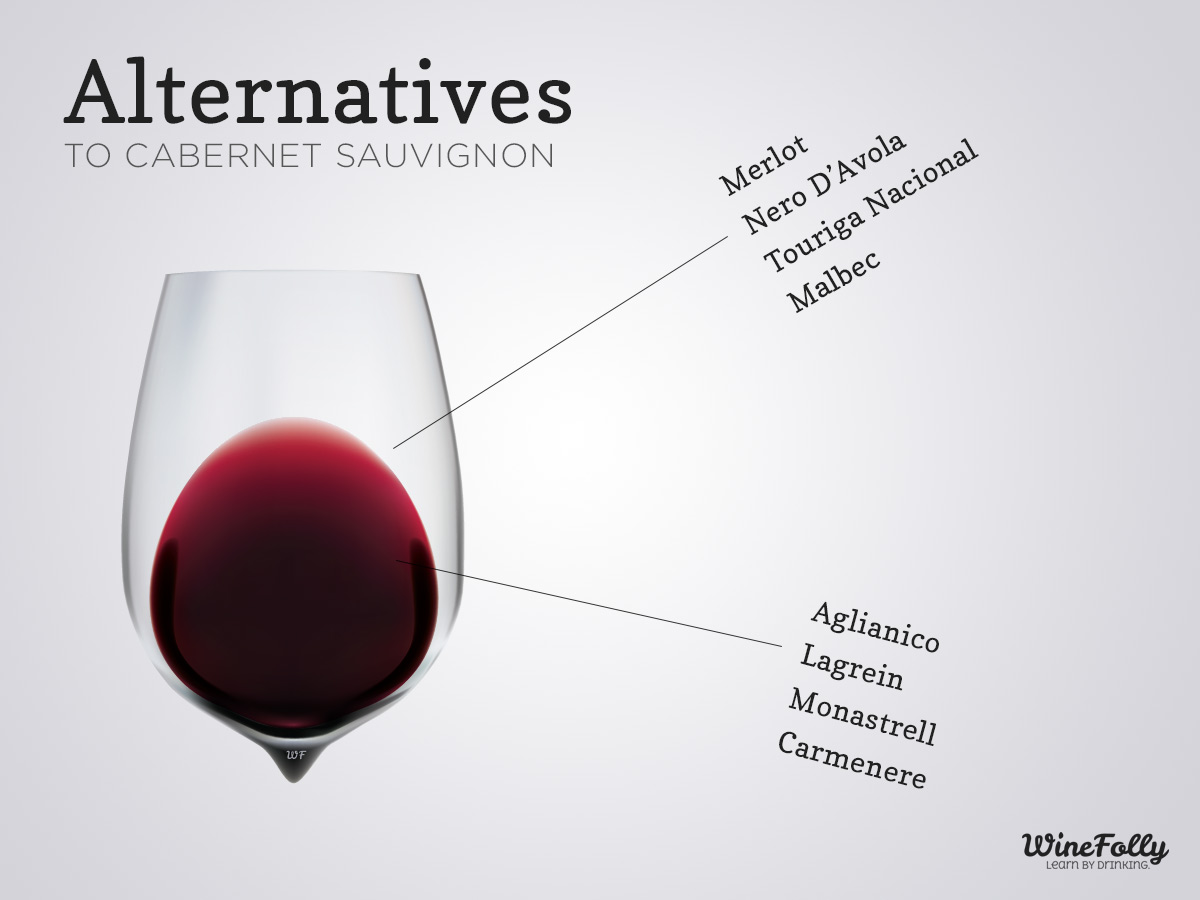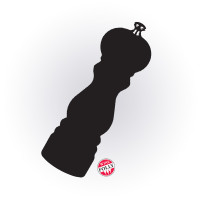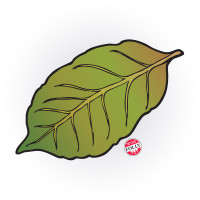Nearly every red wine lover has a special place in their heart for classic Cabernet Sauvignon. In fact, it’s so well-loved that it is the world’s most planted wine grape variety.
Despite how well-distributed Cabernet Sauvignon is, finding a decent bottle is surprisingly difficult (and expensive). So, to expand your palate (and preserve your wallet), let’s look at some lesser-known wine grapes that are great alternatives to Cabernet Sauvignon.
Fruit-forward Alternatives to Cabernet Sauvignon
Wine Keywords: Supple, black fruit, opulent, round, velvet, mocha, and plum. If these words sing to your wine-drinking sensibilities, check out the following alternatives to Cabernet Sauvignon.
1. Hillside Estate/High Elevation Merlot
Merlot can be just as rich and full-bodied as Cabernet Sauvignon; you just need to get the right one. Keep your eyes peeled for Merlot with moderate alcohol (above 13.5% ABV) and about 16 to 24 months of oak aging. Higher alcohol and oak aging are the basic indications of a Merlot wine with a full-bodied flavor.
Also, a great place to find richer-styled Merlot wine is from hillside estates. Higher-elevation vineyards produce smaller grapes, making more intensely-colored and higher-tannin wines. Some examples include the hills around Napa and Sonoma Valley (such as Diamond Mountain, Howell Mountain, and Clear Lake AVAs). You might also check out Walla Walla in Washington State and Mendoza, Argentina.
2. Nero D’Avola from Sicily
Sicily’s Nero D’Avola offers exceptional value and is worth exploring. The grape often has black fruit characteristics and chalky tannins. Nero D’Avola is frequently blended with other grapes, such as Syrah or the other local red, Frappato, which makes the wine taste lighter but have a longer finish.
3. Touriga Nacional from Portugal
Portuguese dry red wines are becoming more and more available. Touriga Nacional is a black grape traditionally used in making Port, but when produced in a dry style, it takes on flavors very similar to Cabernet Sauvignon. Some of the best Portuguese dry reds include Touriga Nacional mixed with several other local varieties. By producing blends, the flavor profiles are extended and taste more complex. Check out a dry red wine from the Douro Valley.
4. Malbec-Cabernet from Argentina
Malbec is a grape variety that unleashes all its power within the first five seconds of tasting. However, when you pair its explosive front-loaded personality with a little bit of actual Cabernet Sauvignon, the wine will sing. Argentina is home to about 90% of the world’s Malbec, so you’ll find many great examples there.

Herbaceous Alternatives to Cabernet Sauvignon
Wine Keywords: Tobacco, meaty, black pepper, bell pepper, smoke, herbs, graphite, and structure. If these words sound like music to your wine-drinking preferences, check out the following alternatives to Cabernet Sauvignon.
1. Aglianico from Italy
Aglianico grows in the southern part of Italy around Campania and Basilicata. You’ll find this wine to have rich tannins and a meaty flavor. It’s surprisingly long and complex on the palate, which is why it is such a great alternative to savory Cabernet Sauvignon. Look for vintages aged 6+ years where the tannins have softened.
2. Lagrein from Italy
Lagrein is a very fascinating variety from Northern Italy in Alto Adige, with black peppery notes and good acidity. It makes wines that have a striking resemblance to Cabernet Sauvignon. As with Cabernet Sauvignon, pay attention to winemaking practices to give you hints at how bold the wine will be because, for the most part, Lagrein tends to be slightly lighter in color and density than Cabernet Sauvignon.
3. Monastrell from Spain
Rich, dark, and meaty are Monastrell wines (a.k.a. Mourvèdre) from Spain. These wines are usually sold young and fresh, but because of the hot growing conditions, they are usually slightly lower in acidity, making them smooth and lush on the finish. While Spain offers some of the best-valued Monastrell, you can also look to Provence in the Bandol region to find a great (but more pricey) French version.
4. Carménère from Chile
Chile is famous for producing what people now consider the ‘lost grape of Bordeaux.’ Carménère is very savory with flavors of bell pepper and black pepper. As a wine grape that’s lighter in color and has higher acidity, it will come across as more ‘elegant’ than Cabernet Sauvignon, but some examples have moderate oak-aging, making them rich and lush.
Why Does Cabernet Sauvignon Taste So Good?
Let’s identify what it is about Cabernet Sauvignon that you go crazy for.

What does the chart mean?
Basically, Cabernet Sauvignon tends to linger longer on your palate. This ‘lingering’ helps the drinker taste many different components within the wine over a longer period of time. Think about how a wine builds in your palate the next time you taste wine.
- Tannin tends to come in after the initial burst of fruit.
- The finish of a wine will either give the sense of sweetness or of tartness.
- Some wines have very little mid-palate.
- Some wines build over time, some diminish.
Cabernet Sauvignon is actually a relatively new grape variety in terms of age, as it’s only been around for about 350 years. Compare that to Muscat Blanc at nearly 2,000 years, and suddenly Cabernet seems like a baby. Despite its youth, wines made with Cabernet grapes have nuanced flavors, fruit, and boldness that all come together to make a wine that’s very special.
Fruit
Cabernet Sauvignon has primarily dark fruit flavors, including:
currant, blackberry, plum, boysenberry, black cherry, blueberry, and jam.
Herb, Spice, Other
Cabernet Sauvignon offers very savory flavors in addition to fruit with the following nuanced flavors:
mint, black pepper, red bell pepper, violet, eucalyptus, anise, bay leaf, cinnamon, menthol, and camphor.
Tannin
The tannins in Cabernet Sauvignon are bold, but when made well, they come on smoothly:
cedar, tobacco, sandpaper grit, gravel, bitterness, dark chocolate, grip, graphite, and charcoal.
Oak
Oak aging Cabernet Sauvignon smooths out grippy grape tannins and makes the wine feel more concentrated:
smoke, vanilla, clove, milk chocolate, fenugreek, roasted coffee, dusty, and mocha.





